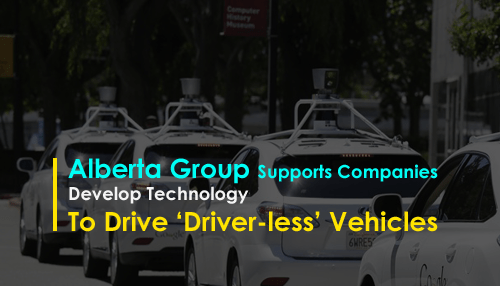The black car gradually meandering a south Edmonton parking area doesn’t seem strange, yet the technology it is testing could represent a giant Alberta economic opportunity.
The 2013 e6 from Chinese manufacturer BYD has been adjusted to help create navigation systems and other equipment made in the territory that would be vital segments in the conceivably massive world of self-driving vehicles.
“In the following couple of years, the sorts of items that go into self- autonomous systems, the market looks like about $100 billion,” Ken Brizel said Friday as the driverless electric compact crossover crawled around an empty parking area in the Edmonton Research Park at 10 km/h.
“The market is going crazy … That’s the reason we’re here.”
Brizel is CEO of the Alberta Centre for Advanced Micro-Nanotechnology Products (ACAMP), a non-profit group that for the most recent decade has helped companies develop cutting-edge technology.
ACAMP began a consortium about a year prior that has 34 local and multinational organizations designing the sensors, cameras, security systems, and other hardware for autonomous transportation.
It brought four months to strip down the donated e6 — BYD is a piece of the consortium — and install the new machinery.
The back holds a server frame with transfers and switches into which diverse segments can be plugged into trials.
In spite of the fact that the vehicle stays off open streets as a PC program guides it in rough figure eights, somebody sits in the driver’s seat to take control or punch the red stop catch if issues emerge.
Something else, there’s very little for an onlooker to see. Going in the secondary lounge is about the same as inching around a parking lot with your grandmother.
“Truly, for me, originating from a farm background, the possibility of a vehicle directing itself isn’t so new,” operator Radon Chatterton stated, clarifying present-day tractors are by and large represented by GPS.
“The fact I built it is a little more frightening.”
In any case, the technology is impressive. One thing experiencing testing is a navigation system by Calgary’s NovAtel, while Edmonton-based Soltare has a device that detects police, ambulance, and fire sirens and cautions different vehicles to pull over.
Siamak Akhlaghi, ACAMP’s chief of business development for – autonomous systems, said Alberta is a good place to perfect such equipment in view of the climate.
“There’s such a large number of difficulties to have an answer that would work all over. Work on the ice, work in a desert,” he said.
“Here in Alberta you’re working with an electronic car in – 30 C. You will see such a significant number of difficulties you’re not going to find in California — the footing of the streets, how the battery would behave.”
They’re likewise consulting with three levels of government on rules and regulations expected to permit such vehicles in the city.
About half of ACAMP’s $4.2-million annual budget is secured by company fees and the rest originates from the provincial government to spur economic diversification.
Brizel would love to see BYD open a processing plant amassing driverless vehicles in Alberta.
“Suppose you needed to assemble a plant here to help Western Canada. That wouldn’t be unbelievable. The batteries can at present be made in China and sent here,” he said.


